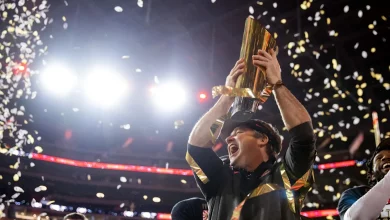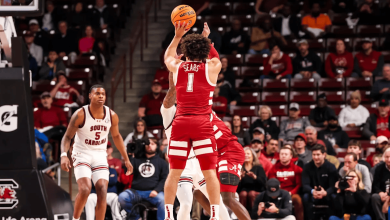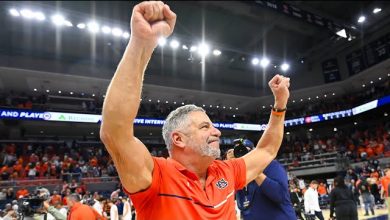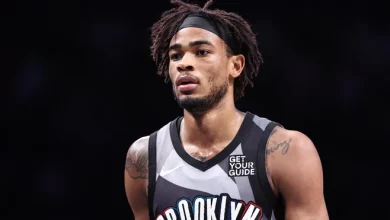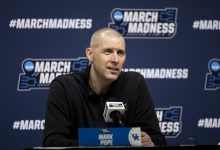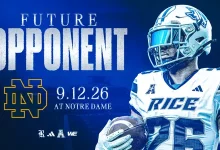Bears roster outlook: Difficult decisions ahead for the offensive line beyond Darnell Wright, as the team determines its starting five among several talented but competing players.
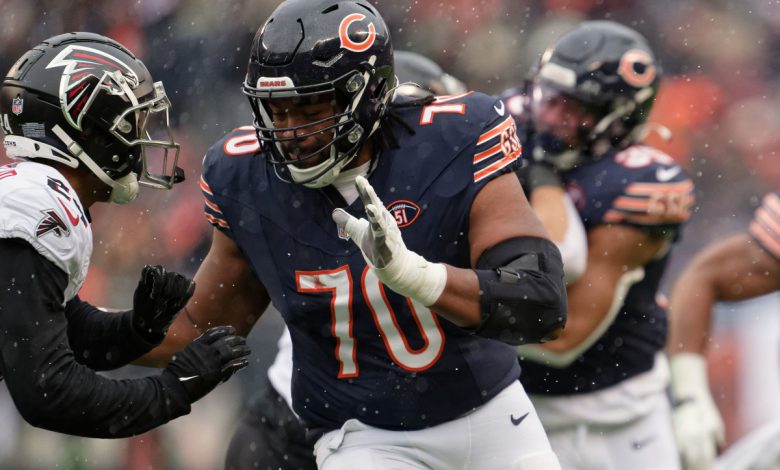
The Chicago Bears, like many NFL teams, face a perennial challenge: building a cohesive and effective offensive line that can protect the quarterback, open running lanes, and sustain consistent offensive production. The importance of a solid offensive line cannot be overstated—it is the foundation upon which the entire offense is built.
Darnell Wright, the Bears’ promising rookie and a key piece on their offensive line, has garnered attention as a potential cornerstone. However, beyond Wright, the Bears are faced with a daunting roster decision-making process involving several talented but competing players vying for the remaining starting spots.
This article explores the current state of the Bears’ offensive line, the factors influencing tough roster decisions, the players involved, and the strategic considerations that will shape the team’s starting five moving forward.
The Significance of an Effective Offensive Line
Before delving into individual players and roster battles, it’s essential to understand why the offensive line is so critical:
Protection for the Quarterback: A strong line minimizes sacks and hits, allowing quarterbacks to operate confidently and execute their plays.
Run Blocking: It opens lanes for running backs, enabling a balanced offensive attack.
Team Success: A dominant offensive line often correlates with overall team success, as it stabilizes the offense and reduces turnovers.
Given these factors, the Bears’ management and coaching staff are highly invested in assembling an optimal five-man unit.
Darnell Wright: The Foundation Piece
Darnell Wright, drafted in the first round of the 2023 NFL Draft, quickly became a focal point for the Bears’ offensive line plans. As a tackle with impressive athleticism, strength, and technique, Wright has shown promise both in training camp and preseason games.
His versatility, ability to handle NFL pass rushers, and potential to develop into a franchise-caliber tackle make him a lock to start at right tackle or left tackle, depending on team needs. His presence provides stability and a foundation on which the rest of the line can be built.
The Remaining Offensive Line Spots: A Pool of Talented Contenders
Beyond Wright, the Bears have assembled a roster that includes several talented offensive linemen competing for starting roles. These players come with different strengths, experience levels, and positional versatility, making the decision-making process complex.
The Candidates
Teven Jenkins (OG/OT)
A former second-round pick, Jenkins has shown flashes of dominance when healthy.
Known for his power run-blocking and physical style.
Health and consistency have been concerns, but his talent remains undeniable.
Lucas Patrick (C/OG)
Veteran presence with extensive starting experience.
Offers versatility, able to play both center and guard.
His leadership and familiarity with the offense are valued.
Sam Mustipher (C)
Primarily a backup but has started games due to injuries.
Known for his intelligence, communication, and solid fundamentals.
Could compete for a starting role or serve as a reliable interior backup.
Doug Kramer Jr. (C/OG)
A younger player with limited NFL experience but showing promise in camp.
Has the potential to develop into a starter with more reps.
Riley Reiff (OT)
Veteran free agent signing with extensive starting experience.
Provides depth and veteran stability on the line.
Jatavis Brown (OT/OG)
A versatile lineman who can fill multiple roles.
Still competing for a roster spot but offers positional flexibility.
Other developmental players
Including draft picks or undrafted free agents, these players are fighting for the last spots and developmental roles.
Strategic Considerations in Roster Decisions
The coaching staff and management face several key questions when determining the starting five:
Positional Versatility vs. Specialist Roles
Players who can play multiple positions (e.g., guard and tackle) offer flexibility.
Prioritizing versatile linemen can be advantageous in case of injuries or game plan adjustments.
Experience vs. Youth
Veteran players like Reiff and Patrick bring stability but may not have the ceiling of younger players.
Young prospects like Kramer or others may offer upside but require development time.
Health and Durability
Past injury histories influence trust in players to stay available throughout the season.
Consistent health is vital in making starting decisions.
Scheme Fit
The offensive scheme emphasizes zone blocking, power run game, or quick passing—players’ skill sets are evaluated accordingly.
Competitive Performance
Preseason performance, practice reports, and coaching feedback are critical indicators.
The Battle for the Remaining Starting Spots
Left Guard
Candidates: Teven Jenkins, Lucas Patrick, Riley Reiff
Considerations:
Jenkins’s raw power and potential make him a primary candidate if he can stay healthy.
Patrick’s experience and familiarity with the offense make him a strong contender.
Reiff provides veteran presence and stable depth.
Center
Candidates: Lucas Patrick, Sam Mustipher, Doug Kramer Jr.
Considerations:
Patrick’s versatility could secure him the spot.
Mustipher’s communication skills and leadership may give him an edge.
Kramer Jr. is an outsider hoping to impress coaches with his development.
Right Guard
Candidates: Teven Jenkins (if moved inside), other interior linemen
Considerations:
Jenkins’s power suggests he could handle interior duties.
Coaches might prefer specialized guards if Jenkins is primarily a tackle.
Right Tackle
Candidates: Darnell Wright (locked in), other swing options
Considerations:
Wright’s talent secures him the starting right tackle spot.
Backup options include Reiff or other developmental players.
The Impact of Injuries and Camp Performance
Injuries during training camp and preseason can dramatically reshape the roster. For example:
If Jenkins struggles with health or consistency, the team may lean toward veteran options.
If young players like Kramer Jr. impress, they could leapfrog more experienced but inconsistent players.
The coaching staff’s assessment of performance in live-game situations will heavily influence decisions.
The Importance of Chemistry and Cohesion
While individual talent is essential, the offensive line is a unit that must work seamlessly. Communication, trust, and cohesion are critical, especially in protecting the quarterback and executing schemes.
The coaching staff will consider:
How well players gel together during practice.
Their ability to communicate assignments.
Their work ethic and attitude.
Building chemistry among the line is a process that can influence who earns starting roles early in the season.
The Broader Context: Building for the Future
The Bears are in a phase of rebuilding and retooling their roster. While immediate performance is critical, the coaching staff also considers:
Player development potential.
Long-term fit within the team’s offensive philosophy.
Salary cap implications and contract statuses.
This broader perspective influences decisions, especially when evaluating borderline players.
Potential Line Combinations and Schemes
The Bears may experiment with different starting lineups in preseason and early games to evaluate various combinations. Some possible configurations include:
Traditional approach: Wright at right tackle, Jenkins at left guard, Patrick at center, Reiff at left tackle.
Youth emphasis: Incorporating more young players for developmental purposes.
Versatility-focused lineup: Using players who can move between positions based on game flow.
The final decision will balance performance, experience, health, and scheme fit.
The Chicago Bears face a challenging roster outlook for their offensive line beyond Darnell Wright. With several talented players competing for limited starting spots, the coaching staff must weigh experience against youth, versatility against specialization, and health against potential.
The decisions made in the coming weeks will have a profound impact on the team’s offensive success and stability. Building a cohesive, resilient, and effective offensive line is a complex puzzle—one that requires careful evaluation, strategic planning, and sometimes, tough choices.
As the season approaches, all eyes will be on training camp battles, practice performances, and preseason games to see which players earn the coveted starting roles and how the Bears’ offensive line ultimately shapes up. The outcome of these decisions will be instrumental in defining the Bears’ offensive identity and their pursuit of success in the upcoming NFL season.



